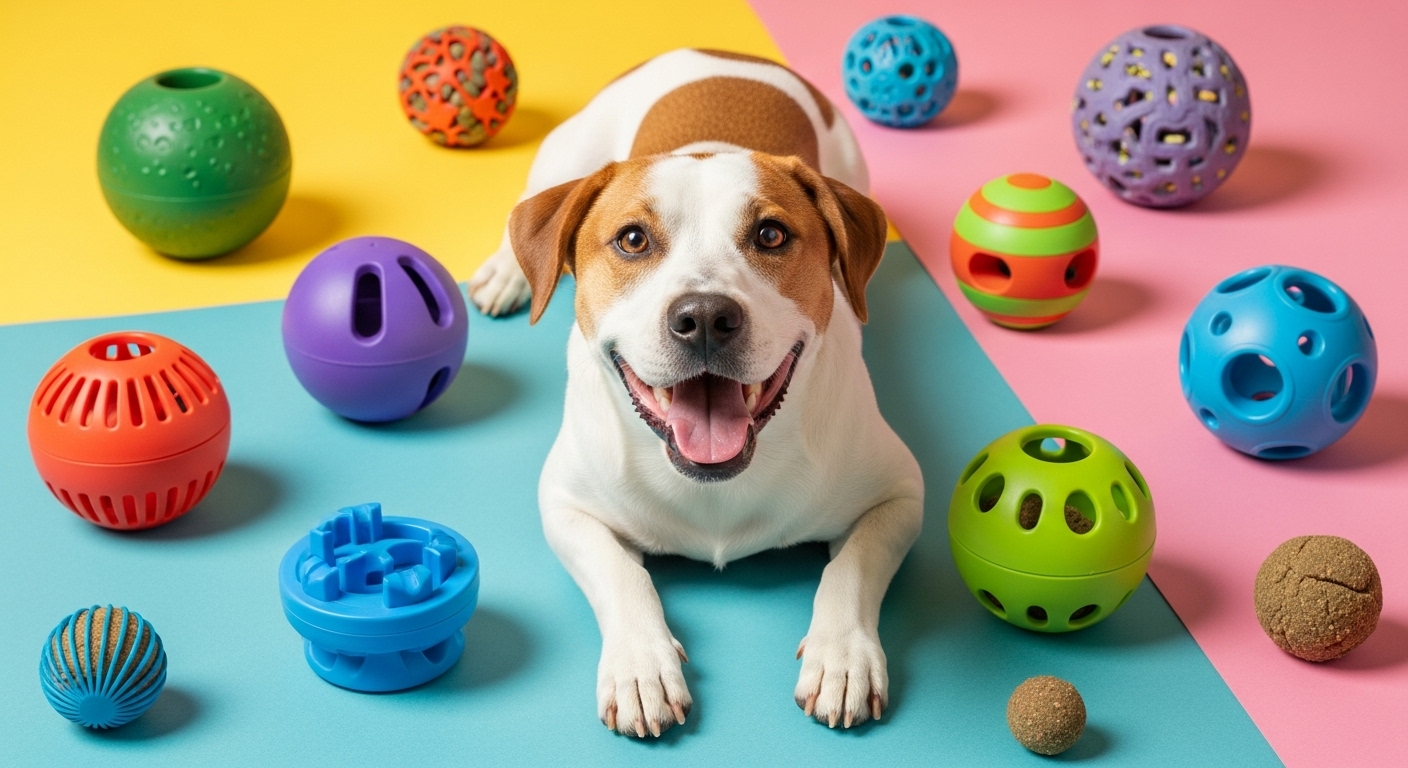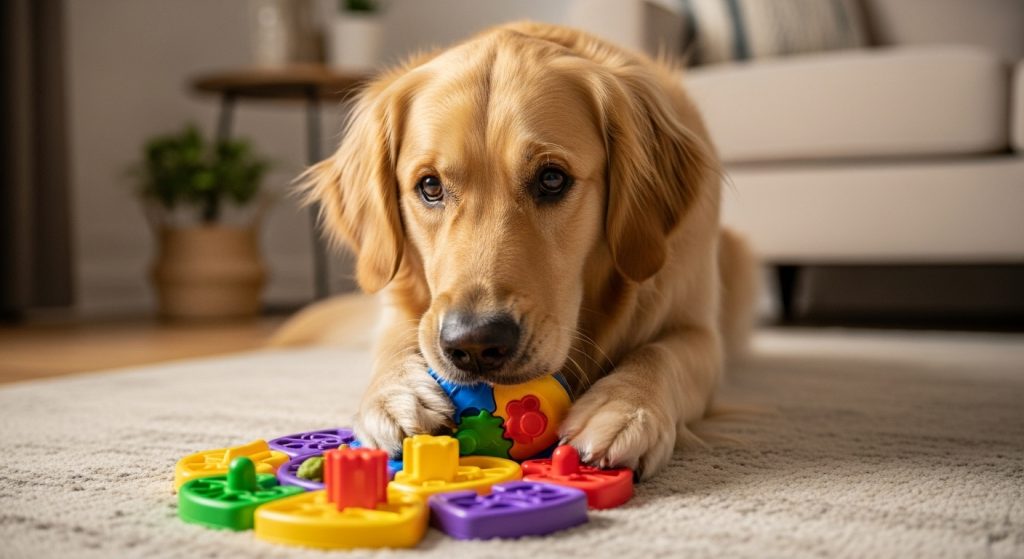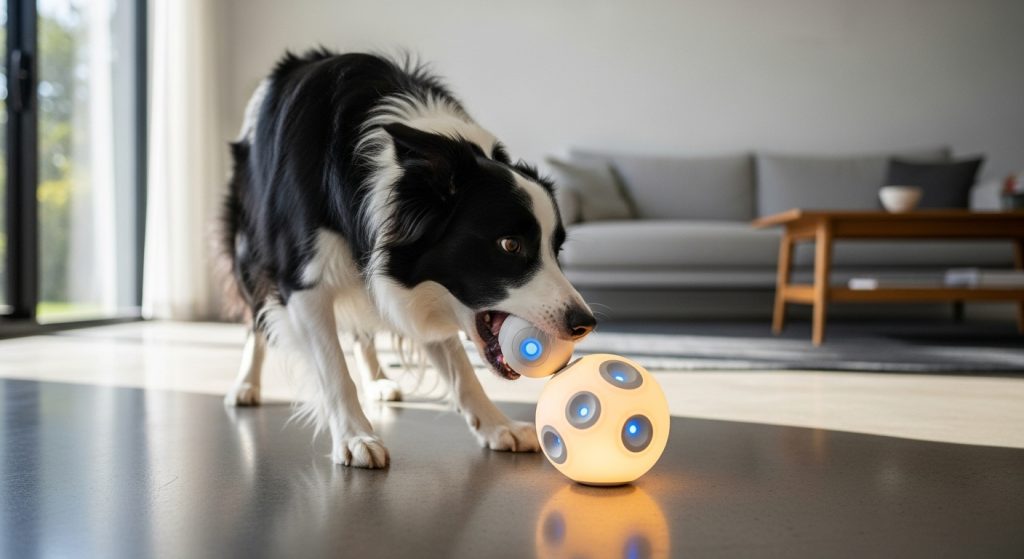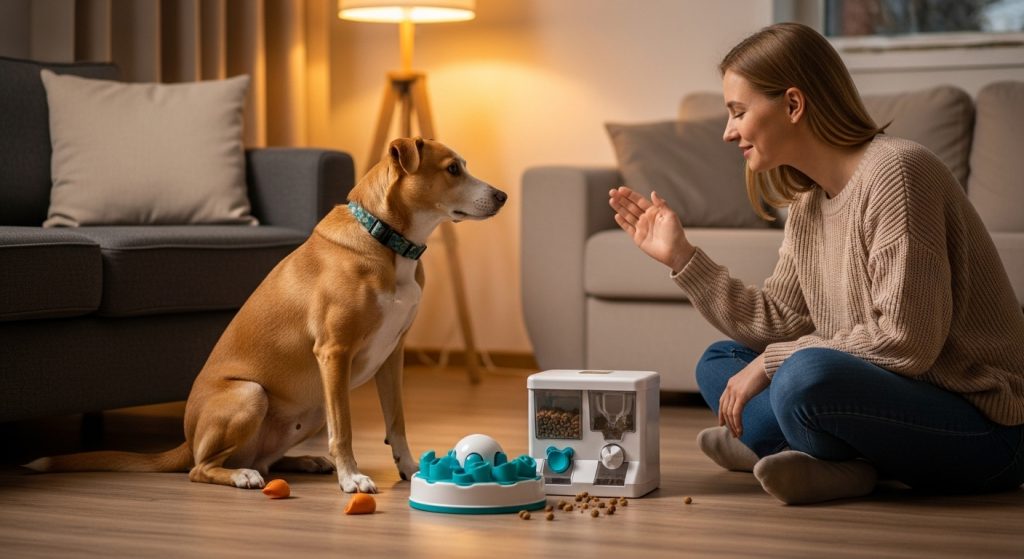Most pet owners know dogs need daily walks and physical play, but few realize that mental stimulation is equally vital. Just like humans, dogs can become bored and frustrated without brain challenges. The result? Chewed shoes, endless barking, or digging up your garden.
Keeping your dog mentally active through interactive toys helps channel their natural curiosity and problem-solving instincts into healthy play. This not only prevents boredom but also improves obedience, confidence, and emotional balance.
Think of mental stimulation as your dog’s gym for the brain. Every time they solve a puzzle or figure out how to get a treat, they strengthen neural pathways that make them smarter and more focused.
Some behavioral experts even compare puzzle playtime to mindful meditation for dogs — it keeps them calm, centered, and satisfied.
The Science Behind Interactive Toys
Studies show that dogs who engage in daily cognitive activities are:
-
Less likely to develop anxiety or destructive behavior
-
Better at following commands
-
More adaptable to new environments
By introducing toys that require thinking, sniffing, or strategy, you offer your dog a sense of purpose and fulfillment.
Examples of Mentally Engaging Toys
Instead of tossing a regular ball, try a:
-
Snuffle Mat: encourages scent-hunting instincts
-
Treat Puzzle Feeder: builds patience and logic
-
Smart Ball or Motion Toy: promotes problem-solving and focus
These toys transform ordinary playtime into brain-training sessions that strengthen your dog’s focus and reduce anxiety.
Types of Interactive Dog Toys and How They Work
Every dog is different — what excites a Border Collie might bore a Bulldog. That’s why interactive toys come in various forms designed to stimulate different senses and personalities.
Let’s explore the four main categories of toys that effectively boost focus and mental engagement.
a) Puzzle Toys — The Classic Brain Workout
Puzzle feeders or treat-dispensing toys challenge dogs to unlock food or hidden rewards. The harder they try, the more they learn to strategize. These toys come in multiple difficulty levels, allowing you to start easy and increase complexity as your dog improves.
-
Great for: Smart, food-motivated breeds like Poodles and Labs
-
Benefits: Builds patience, enhances memory, reduces boredom
Try rotating puzzles weekly so your dog never loses interest.
b) Sensory Toys — Engage the Nose and Ears
Dogs experience the world through smell and sound. Sensory toys trigger curiosity and provide comfort, especially for anxious pets.
Some sensory toys release calming scents like lavender, while others make soft noises that mimic natural prey. These subtle features stimulate your dog’s senses and keep them focused during solo play.
-
Great for: Puppies or rescue dogs
-
Benefits: Encourages exploration, lowers anxiety
c) Motion-Activated Toys — Energy Meets Curiosity
If your dog loves to chase, rolling or self-moving toys are perfect. These devices react to touch or movement, keeping dogs alert and engaged.
-
Great for: High-energy breeds like Huskies or Terriers
-
Benefits: Combines physical and mental stimulation
They’re also great alternatives when you’re busy — your dog can entertain themselves safely indoors.
d) Interactive Smart Toys — The Future of Play
Smart technology has entered the dog world too! Some modern toys use sensors or apps to personalize playtime. They can automatically adjust difficulty, record play statistics, or dispense treats at set times.
This kind of play strengthens focus and independence while keeping your dog occupied when you’re away.
Remember: The goal isn’t just fun — it’s mental growth through engagement. Mix and match different toy types to keep your dog’s brain active from multiple angles.
How to Use Interactive Toys Effectively
Owning the right toy is only half the job — how you use it matters even more. Let’s dive into some expert-approved methods to make interactive play truly rewarding and mentally stimulating.
Step 1: Start Simple and Reward Progress
When introducing a new toy, don’t jump straight to the most complex version. Let your dog experience small wins first. For example, begin with an easy treat dispenser before upgrading to a multi-step puzzle.
Each success builds confidence, focus, and anticipation for the next challenge. Always use positive reinforcement — treats, praise, or a gentle pat — when your dog solves a puzzle or engages calmly.
Step 2: Maintain Consistent Play Sessions
Consistency turns playtime into a mental training routine. Schedule two 15-minute sessions daily — one in the morning, one in the evening.
During each session, minimize distractions: turn off the TV, set your phone aside, and focus entirely on your dog. Dogs thrive on attention and clear cues.
Step 3: Combine Toys with Training Commands
Integrate puzzle play with obedience cues like sit, stay, or find it. This adds structure and cognitive complexity. It also strengthens your communication bond, improving your dog’s ability to focus on tasks.
Step 4: Rotate and Refresh Regularly
Dogs, like humans, get bored with repetition. Rotate toys weekly to keep the challenge fresh. You can even hide old toys for a few weeks — when they reappear, your dog will treat them as brand-new!
Step 5: Balance with Outdoor Exploration
No toy can replace outdoor sensory experiences. Combine interactive toy play with walks, sniffing games, and social time to achieve a perfect mental-physical balance.
The ultimate goal? A well-rounded, happy, and calm dog who learns through joy.
Building a Smarter, Happier Dog
Interactive dog toys for mental stimulation aren’t just trendy accessories — they’re tools for emotional health, focus, and lifelong learning. By challenging your dog’s brain daily, you nurture their natural intelligence while preventing boredom and behavioral issues.
Whether it’s a simple snuffle mat, a motion ball, or a high-tech smart toy, every moment of mindful play brings your dog closer to a happier, more confident version of themselves.
So next time you shop for toys, remember — the best ones don’t just entertain; they educate and connect.




